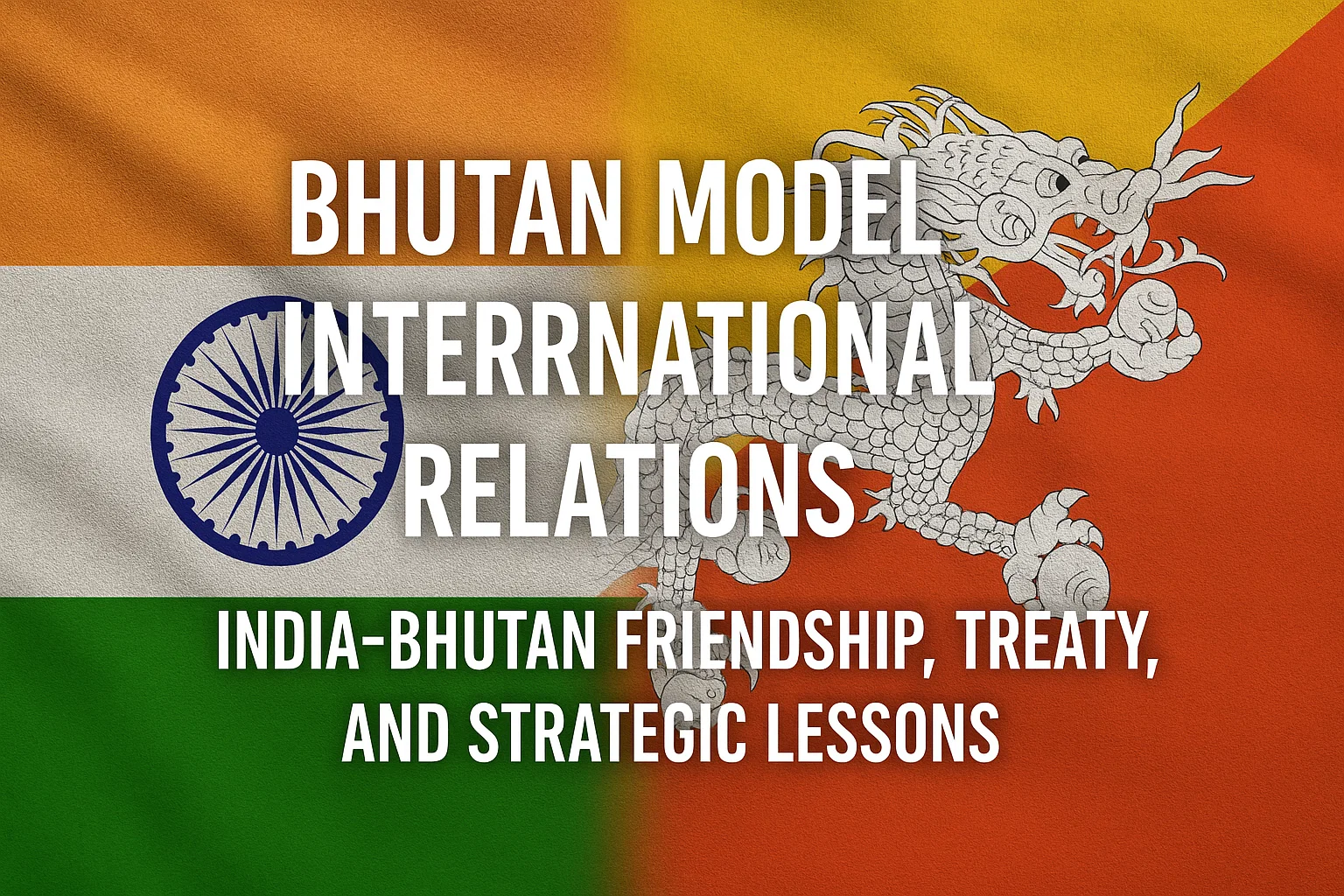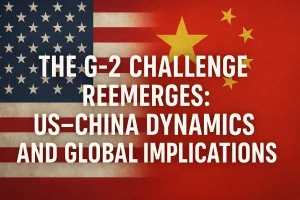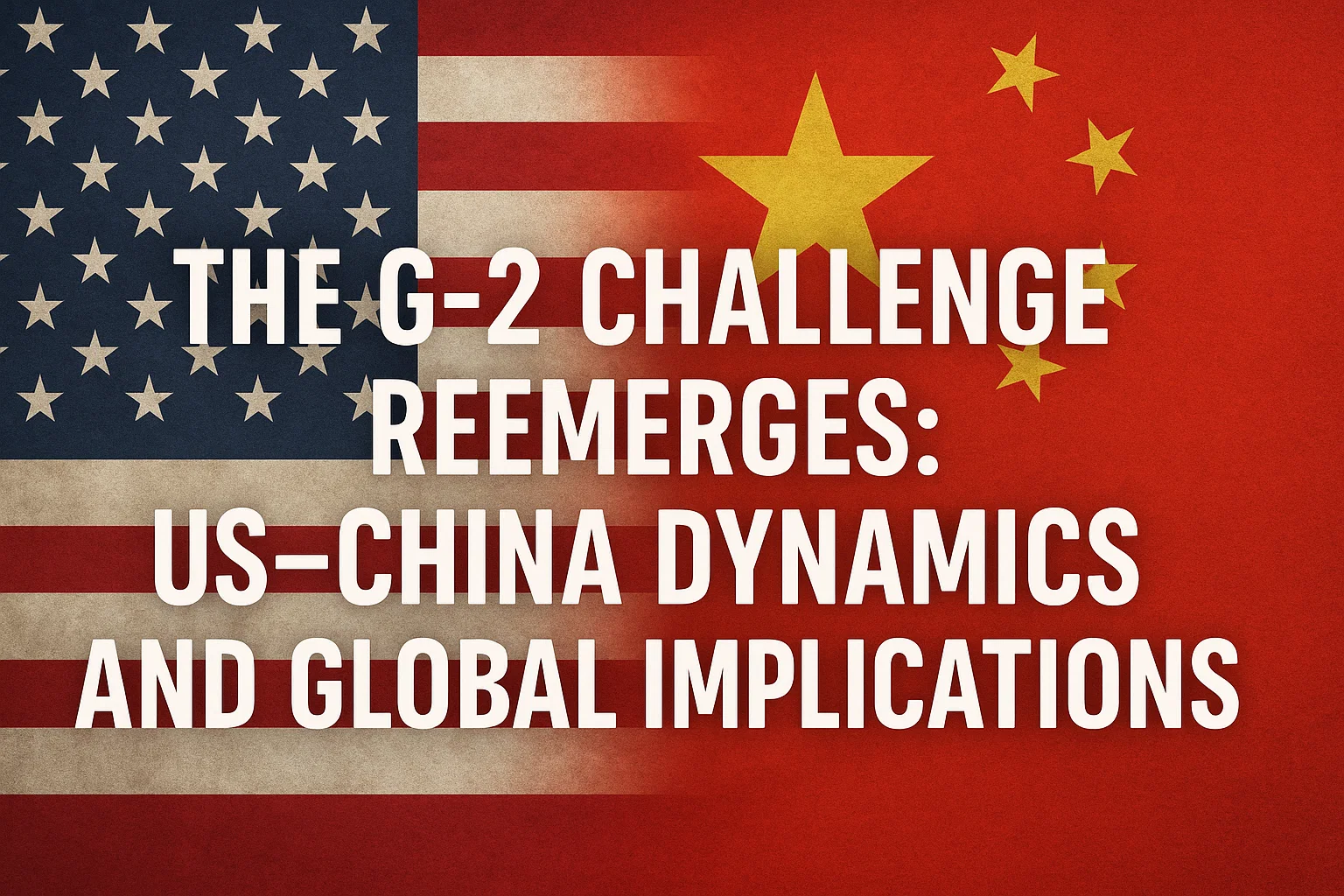Bhutan Model in International Relations: India-Bhutan Friendship, Treaty, and Strategic Lessons
Explore how India and Bhutan’s relationship exemplifies balanced diplomacy through trust, mutual respect, and strategic cooperation. Learn how the Bhutan Model guides India’s regional foreign policy.
Bhutan Model
Despite vast asymmetry in size and power, the relationship between India and Bhutan stands out as a model of trust, mutual respect, and strategic cooperation. It has flourished through adaptive diplomacy, offering a positive counterpoint to India’s often complex regional relationships and serving as a template for managing asymmetric ties—especially relevant amid China’s expanding influence in the Himalayas.
The Treaty of Friendship and Cooperation (2007), which revised the earlier 1949 treaty, symbolised a modern and equal partnership. Signed on February 8, 2007, in New Delhi, it reaffirmed perpetual peace, mutual respect for sovereignty, and deep cooperation in trade, education, security, and development.
Why Are India-Bhutan Relations Significant?
-
A Model of Stable Asymmetry:
Unlike other South Asian relationships marked by mistrust, the India-Bhutan partnership demonstrates how a large power and a smaller neighbour can coexist peacefully. It reflects maturity and respect rather than dominance. -
Strategic and Security Imperative:
Bhutan’s strategic location in the Eastern Himalayas serves as a vital buffer between India and China. The 2017 Doklam standoff, which stemmed from Chinese activity in Bhutanese-claimed territory, revealed the intertwined nature of Bhutan’s sovereignty and India’s security. India’s support to Bhutan reinforced this interdependence and trust. -
Successful Evolution of Diplomacy:
The relationship has evolved from a paternalistic framework (1949 Treaty)—where Bhutan agreed to be guided by India in external affairs—to a sovereign partnership (2007 Treaty) that ensures equality and mutual respect. This evolution highlights India’s diplomatic maturity and Bhutan’s growing confidence. -
Mutually Beneficial Development Partnership:
Hydropower cooperation has been the cornerstone of bilateral ties since the 1960s. It provides Bhutan with its largest source of revenue while supplying India with clean, renewable energy. This collaboration has created a sustainable win-win model of economic interdependence. -
Cultural and Spiritual Connect:
The shared Buddhist heritage forms the emotional and cultural bedrock of relations. Symbolic exchanges—like India sending sacred Buddha relics to Bhutan—reinforce civilisational ties and people-to-people goodwill.

How the Bhutan Model Offers Lessons for Other International Partnerships
The “Bhutan Model” illustrates effective diplomacy in managing asymmetry through trust, respect, and mutual benefit. It offers several lessons for India’s regional and global engagements:
-
Emphasise Sovereign Equality:
Respecting the smaller partner’s independence builds long-term trust. India’s willingness to amend the 1949 treaty in 2007 showed restraint and respect for Bhutan’s strategic autonomy—a move that strengthened relations profoundly. -
Anchor Relations in Developmental Cooperation:
Development partnerships should address the smaller partner’s priorities. Projects like hydropower dams directly uplift Bhutan’s economy, making India’s involvement visible and beneficial at the grassroots level. -
Balance Security with Strategic Restraint:
True strategic partnerships thrive on mutual security assurances, not control. India’s discreet yet firm support to Bhutan’s territorial concerns exemplifies security cooperation rooted in trust rather than coercion. -
Resolve Disputes Pragmatically:
Sensitive issues, such as Bhutan’s border talks with China, are approached cautiously and cooperatively. Bhutan’s diplomacy—keeping India informed while engaging with Beijing—reflects a careful balance that preserves stability. -
Nurture Cultural and Connectivity Ties:
Strengthening people-to-people relations through education, culture, and infrastructure—like cross-border railways, digital links, and tourism—deepens the partnership beyond political levels and enhances regional integration.
Conclusion
The India-Bhutan relationship is a rare success story in South Asian diplomacy—a partnership built on trust, respect, and shared prosperity. It demonstrates how asymmetry, when managed with sensitivity and foresight, can lead to enduring friendship rather than friction. As India seeks to strengthen ties with other neighbours and expand its global footprint, the Bhutan Model offers a timeless framework: power tempered with empathy, strategy balanced by sincerity.
Subscribe to our Youtube Channel for more Valuable Content – TheStudyias
Download the App to Subscribe to our Courses – Thestudyias
The Source’s Authority and Ownership of the Article is Claimed By THE STUDY IAS BY MANIKANT SINGH




